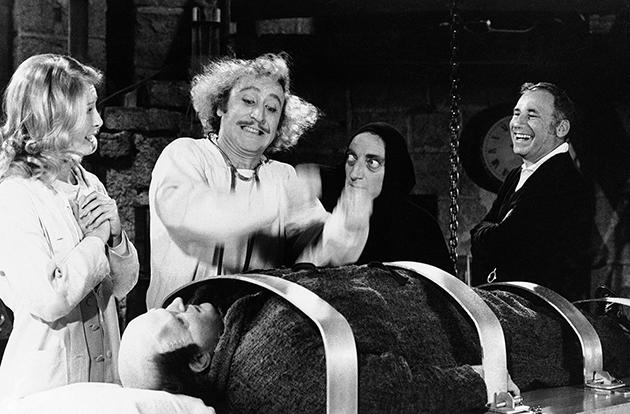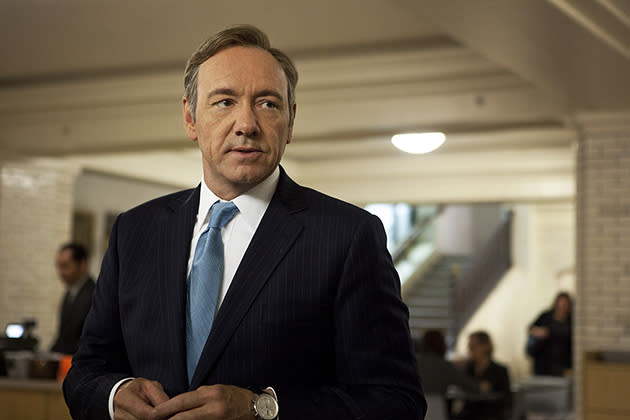Netflix Dropped Your Favorite Movie? Get Used to It
Netflix (NFLX) won plaudits from Hollywood this week with its first-ever Emmy nominations. But Netflix customers who love James Bond or SpongeBob haven’t been as excited about the world’s biggest streaming service lately.


Over the past year or so, Netflix has been shaking up its catalog of movies and television shows and even dropping classics like Goldfinger, Scarface and SpongeBob SquarePants. And the cuts will keep coming, analysts warn, even as Netflix spends over $2 billion for licensing rights over the next year. Older movies and TV shows that are available on cable and competing streaming services are most vulnerable.
So far, the new content strategy is working great, at least for Netflix. Its original series, led by the drama House of Cards, grabbed 14 Emmy nominations on Thursday morning -- a first for any Web-only programming. Subscriber numbers are way up, and the company’s stock has almost tripled this year.
On Monday, Netflix reports second-quarter earnings. Wall Street analysts expect a profit of 40 cents a share, with domestic subscribers hitting 30 million. But if the May premiere of its latest original show, Arrested Development, helped lure in even more new customers, the stock could shoot higher.
Clear strategy
So how has Netflix been able to grow so quickly while cutting back on many popular movies and TV shows?
[See related article on the history of change at Netflix]
Just in the last year or so, it shed thousands of old movies -- from those named above to classic comedies Big and Young Frankenstein to dramas like Elizabeth. Netflix also dropped TV shows from A&E Networks like Storage Wars and Pawn Stars. And last month, it shed a ton of Viacom (VIA) content, including kids' shows from the Nickelodeon channel (farewell, SpongeBob).

At first blush, it seems counterintuitive that Netflix can grow while dropping popular content -- but there’s a clear strategy behind the moves, based on data about which shows help retain subscribers or bring in new customers.
Netflix declined to make its executives available to answer questions about its content strategy. However, prior public comments and two recent surveys help shed light on the data that Netflix uses to make its decisions.
Netflix started as a DVD rental service where the goal was to carry every possible movie. That part of the business is still a cash cow for the company, though it is in decline. But streaming customers don’t watch that many movies -- 80% of the time they opt for TV shows, according to a survey of a week of viewing habits of 500 streaming customers done by research firm Gfk.
Among movies, the most-watched titles were recent releases like the Hunger Games, Mission Impossible: Ghost Protocol and The Awakening, Gfk found. That may be why Netflix let go of old movie deals from intermediaries Epix, in May, and Starz, last year.
Executives have been telling investors that the company is modeling itself as the HBO for the Internet. “The goal is to become HBO faster than HBO can become us," chief content officer Ted Sarandos told GQ in February.
HBO attracts millions of monthly subscribers with a mix of hot original shows and a smattering of old movies and new releases about six months out of theaters. No one expects HBO to carry every movie ever released. That may have been a goal of the old Netflix, but no more.
“What you hear people saying is that there aren’t enough current movies,” says David Tice, who follows the media and entertainment industries for Gfk.
Value of content
In its recent deal with Disney (DIS), Netflix will get access to new releases starting in 2016, after Disney's current deal with Starz expires. Movies will be available first on Netflix, not cable, the kind of exclusive the company is seeking under its new strategy.
For TV shows, almost the opposite is true, the Gfk survey found. Many of the most-watched series have been off the air for years, like Star Trek and The X-Files. Multi-season dramatic series featuring slowly developing story lines, like Mad Men and Breaking Bad, were also popular.
And, unlike network television audiences, the kinds of shows streaming viewers prefer are more likely to be dramas and comedies, not reality-based programs, the survey found. That may explain why Netflix ended its deal with A&E Networks last year for reality shows like Storage Wars, Pawn Stars and Hoarders. Amazon (AMZN) quickly picked up the shows for its growing streaming service.
Netflix executives have also explained that exclusive content is far more valuable than filling out their catalog with popular, but widely available, hit shows.
That was clear in the deal Netflix struck with Dreamworks Animation (DWA) last month. Under the agreement, Dreamworks will create new children’s shows exclusively for Netflix, drawing on its stable of cartoon characters from its movies like Shrek and The Croods, as well as older characters it has rights to like Casper the Friendly Ghost and Mr. Magoo.
That was a smarter move than renewing a contract for Viacom’s Nickelodeon shows, which also run on other outlets, S&P Capital IQ equity analyst Tuna Amobi says. Streaming services haven’t typically had exclusive rights to TV shows, he notes.
“They walked away from Viacom because they felt there wasn’t enough value there,” Amobi says. “The Dreamworks deal was groundbreaking.”

The need for exclusives also helps explain Netflix's big spending on original content -- the company spent $100 million on House of Cards, for example.
Not HBO yet
More than 12% of Netflix subscribers said they signed up because of the original programming and another 8% said they would have canceled but for the new shows, according to a survey of 1,000 U.S. customers last month by Wedbush Securities.
And broadcast networks are more focused than ever on low-cost reality shows and series that tell their stories in a single episode. That’s because slower-developing dramas aren’t appealing to the syndicated TV market, which thrives on reruns of police procedurals and sitcoms.
That’s not to say that Netflix will be able to maintain a perfect record of what to cut and what to add. With producers making ever-greater demands in licensing deals, Netflix may find itself on the losing end of bidding wars from existing rivals like Amazon and Hulu, or rumored new entrants like Google (GOOG) and Apple (AAPL).
And Netflix may end up cutting some junk shows viewers actually want to see, Wedbush analyst Michael Pachter points out.
“People who watch TV watch some quality content and a lot of crap -- we value the crap as filler,” Pachter says. “As Netflix refines its quality offering, it is arguable that people will actually miss some of the crap. We’ll see.”
Netflix’s quest to become 'HBO for the Internet' still has quite a ways to go. The company’s 14 Emmy nominations were dwarfed by HBO’s 108. Even lowly on-air networks CBS and NBC had 53 nominations each.
But with a dozen or more new original shows on the way, Netflix is looking to catch up quickly.
